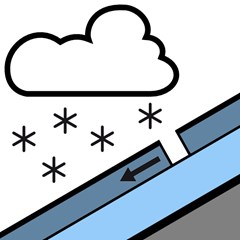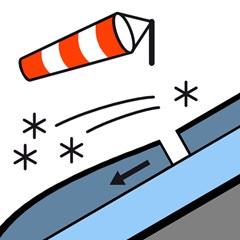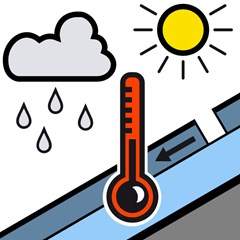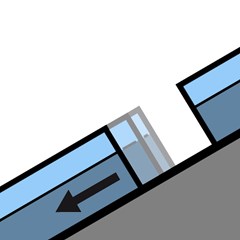Avalanche problems
The avalanche problem explains the avalanche danger in more detail, and how to manage it. The goal is to support recreationists and professionals in their evaluation of the avalanche danger.
Varsom uses the standards of the European Avalanche Warning Services (EAWS).
-
New snow

The avalanche problem is related to current or most recent snowfall.
New snow (loose snow avalanches) - When the new snow is unbound. The avalanche starts at a point and gets wider on its way down.
New snow (slab avalanches) - Wind and high temperatures can start bonding processes and make slabs in the new snow. Slab avalanches in new snow are often easy to trigger.
-
Wind drifted snow (slab avalanches)

Wind drifted snow (slab avalanches) is related to snow transported by wind, with or without a concurrent snowfall.
-
Persistent weak layer (slab avalanches)

Persistent weak layer (slab avalanches) - Avalanches can be released from distance. The weak layers typically include buried surface hoar, depth hoar or faceted crystals. Mostly human triggered avalanches. Weak layers can persist for months.
-
Wet snow

Weakening of the snowpack due to the presence of liquid water.
Wet snow (loose snow avalanches) - When the snow surface is wet and soft.
Wet snow (slab avalanches) - Weakening of pre-existing weak layers in the snowpack or ponding at layer interfaces
-
Gliding snow

Gliding snow - The entire snowpack is gliding on the ground. Typically on smooth bedrock or grass.
An avalanche problem, as presented in our bulletins, consists of these factors:
- Type of avalanche problem and standard icon to illustrate the problem
- What type of avalanche is expected
- How easy can an avalanche be triggered
- Expected distribution of the avalanche problem in the terrain
- Expected avalanche sizes
- Expected weak layer to create avalanches
- Advice - how to recognize and avoid the problem
- Probability for triggering an avalanche